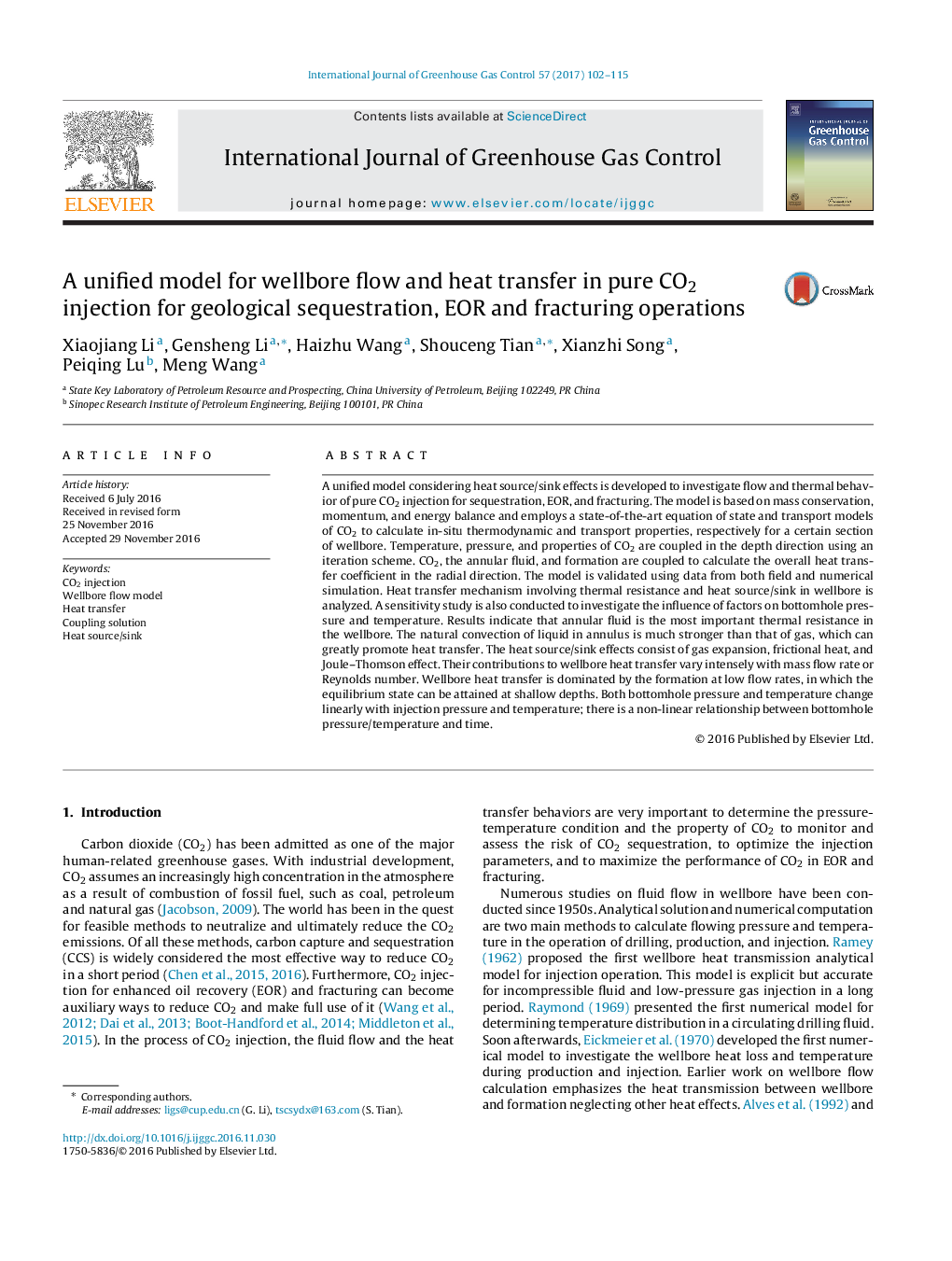| کد مقاله | کد نشریه | سال انتشار | مقاله انگلیسی | نسخه تمام متن |
|---|---|---|---|---|
| 5478915 | 1521962 | 2017 | 14 صفحه PDF | دانلود رایگان |
عنوان انگلیسی مقاله ISI
A unified model for wellbore flow and heat transfer in pure CO2 injection for geological sequestration, EOR and fracturing operations
دانلود مقاله + سفارش ترجمه
دانلود مقاله ISI انگلیسی
رایگان برای ایرانیان
موضوعات مرتبط
مهندسی و علوم پایه
علوم زمین و سیارات
فرآیندهای سطح زمین
پیش نمایش صفحه اول مقاله

چکیده انگلیسی
A unified model considering heat source/sink effects is developed to investigate flow and thermal behavior of pure CO2 injection for sequestration, EOR, and fracturing. The model is based on mass conservation, momentum, and energy balance and employs a state-of-the-art equation of state and transport models of CO2 to calculate in-situ thermodynamic and transport properties, respectively for a certain section of wellbore. Temperature, pressure, and properties of CO2 are coupled in the depth direction using an iteration scheme. CO2, the annular fluid, and formation are coupled to calculate the overall heat transfer coefficient in the radial direction. The model is validated using data from both field and numerical simulation. Heat transfer mechanism involving thermal resistance and heat source/sink in wellbore is analyzed. A sensitivity study is also conducted to investigate the influence of factors on bottomhole pressure and temperature. Results indicate that annular fluid is the most important thermal resistance in the wellbore. The natural convection of liquid in annulus is much stronger than that of gas, which can greatly promote heat transfer. The heat source/sink effects consist of gas expansion, frictional heat, and Joule-Thomson effect. Their contributions to wellbore heat transfer vary intensely with mass flow rate or Reynolds number. Wellbore heat transfer is dominated by the formation at low flow rates, in which the equilibrium state can be attained at shallow depths. Both bottomhole pressure and temperature change linearly with injection pressure and temperature; there is a non-linear relationship between bottomhole pressure/temperature and time.
ناشر
Database: Elsevier - ScienceDirect (ساینس دایرکت)
Journal: International Journal of Greenhouse Gas Control - Volume 57, February 2017, Pages 102-115
Journal: International Journal of Greenhouse Gas Control - Volume 57, February 2017, Pages 102-115
نویسندگان
Xiaojiang Li, Gensheng Li, Haizhu Wang, Shouceng Tian, Xianzhi Song, Peiqing Lu, Meng Wang,